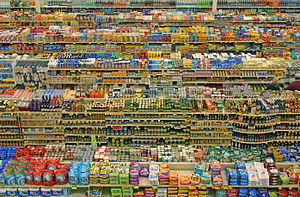In today’s world of 24 hours news and possible calamities around every corner, consumers need to understand how the different factors actually affect food prices so that they can make good decisions. Misinformation and hype can lead to bad decision making at every level of our society. For example, let’s pretend that all the news channels report tomorrow that the price of chicken is going to skyrocket if the drought continues this year. Hearing this, people run out and buy more chicken than they normally would which causes a sharp increase in demand. Higher demand equates to higher prices in our market economy and as predicted, the price of chicken increases. But this increase had nothing to do with the drought because decreases in available supply resulting from the drought won’t actually be seen for months. If you don’t understand which factors impact the prices you pay for food, you might find yourself filling your freezer with chicken, or bacon, or corn it order to avoid price increases that never come.
In the first part of this series, we talked about how production and weather impact the price of our food. Now, let’s look at another of the factors that we don’t hear about as much but that can actually have a more substantial impact on how much it will cost to fill our plates.
Food Marketing
The food marketing system is how the food our farmers grow gets from their farm to our plate. It is believed to be the largest non-government sector of employment in the country and encompasses all the activities that transform, transport, and package the food we eat. Depending on the product, this system can involve a wide range of companies, numerous hand-offs, and considerable expense. The food marketing system includes manufacturers, wholesalers, and retailers, accounting for more than 85% of the price we pay at the grocery store.
There are several different pieces to the food marketing puzzle that contribute to the overall cost of our food. These pieces include manufacturing, processing, packing, transportation, energy, and sales. Across all of these sections, labor costs account for the largest percentage of the price we pay at the store or restaurant, about 38%. Packing and transportation account for another 12% and the remainder goes towards energy, advertising, business expenses like rent and depreciation, and company profits.
If you consider that food marketing, which is everything that happens after a food product leaves the farm, accounts for such a significant amount of our food prices, it is easier to understand why increased costs at the farm level don’t necessarily equate to significant increases in the prices we pay at the store. The price of gas is also often blamed for rising food costs. But, when looked at in this context, the price of gas could double and that would only increase the cost of food by about 4 %. This complexity is why we cannot use one or even two factors to predict price volatility.
Related Articles:
- What Factors Impact Food Prices- Part 1 (fillyourplate.org)
- Classic Thanksgiving Dinner Cost Decreases 5% in 2012 (fillyourplate.org)
- Good News for Holiday Food Shopping: Food Prices Down (fillyourplate.org)


